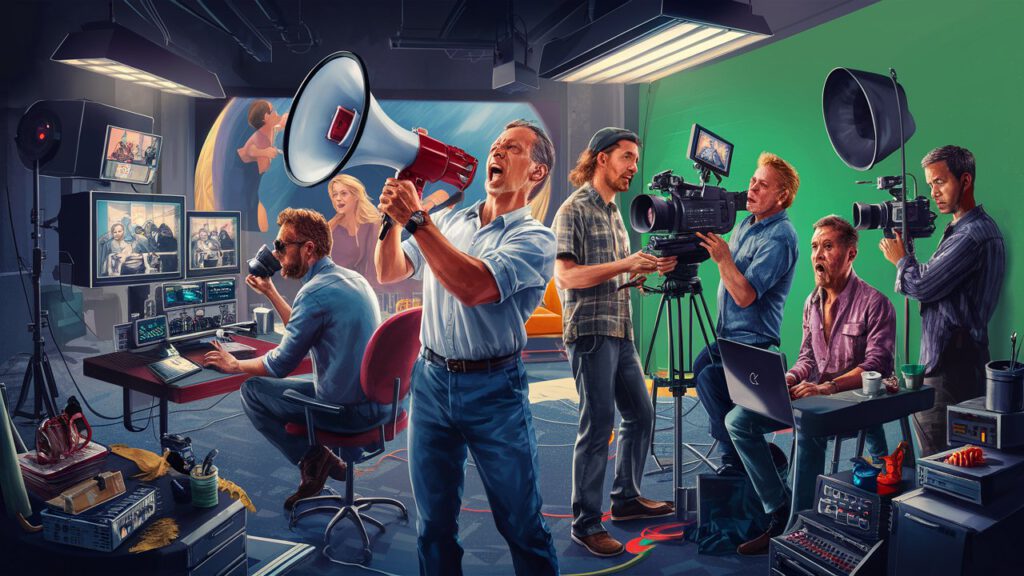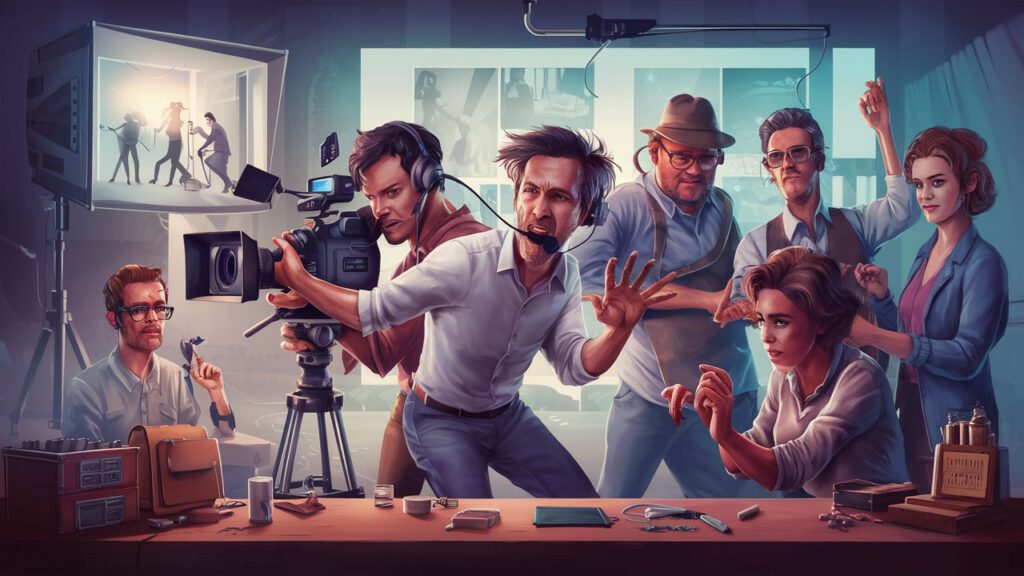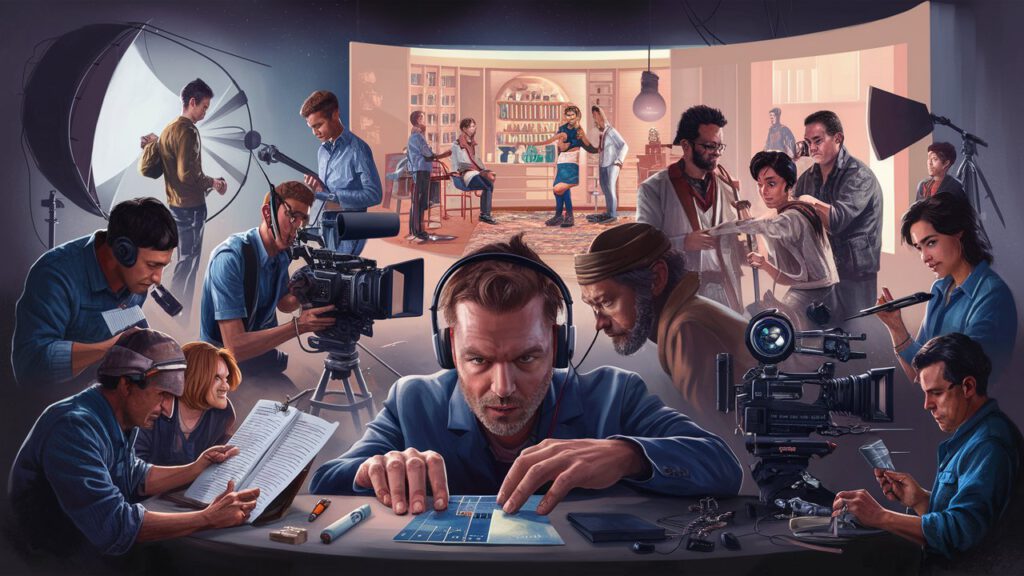Table of Contents

The world of video production is changing fast. A new player called Sora AI has entered the scene. It’s making waves in the industry. How does it compare to traditional video production? Let’s take a closer look.
What is Sora AI?
Sora AI is a new technology from OpenAI. It can create videos from text descriptions. You type what you want to see, and Sora makes a video of it. This is very different from how we usually make videos.
Traditional video production involves several steps:
1. Pre-production: Planning the video
2. Production: Filming the video
3. Post-production: Editing the video
This process usually needs a team of people. It can take days, weeks, or even months.
Key Differences Between Sora and Traditional Production
Let’s compare Sora and traditional methods in different areas:
1. Time
– Traditional: Can take days to months
– Sora: Can create videos in minutes or hours
Sora is much faster. This could be great for quick turnaround projects.
2. Cost
– Traditional: Can be very expensive (equipment, crew, locations)
– Sora: Likely to be cheaper (mainly computing costs)
Sora could save a lot of money, especially for smaller projects.
3. Equipment
– Traditional: Needs cameras, lights, microphones, etc.
– Sora: Only needs a computer with internet
Sora doesn’t need physical film equipment. This makes it more accessible.
4. Crew
– Traditional: Needs a team (director, camera operator, editor, etc.)
– Sora: Needs one person to write prompts
Sora could reduce the need for large production teams.
5. Locations
– Traditional: Often films in real locations
– Sora: Creates virtual locations
Sora can “film” anywhere without travel costs.
6. Flexibility
– Traditional: Changes can be expensive and time-consuming
– Sora: Changes can be made quickly by adjusting the text prompt
Sora offers more flexibility for last-minute changes.
7. Realism

– Traditional: Captures real-world footage
– Sora: Creates artificial footage
Traditional methods still have an edge in realism, but Sora will improve quickly.
8. Creative Control
– Traditional: Allows hands-on direction of every detail
– Sora: Control through text prompts, may have unexpected results
Traditional methods offer more precise control, but Sora opens up new creative possibilities.
9. Actors
– Traditional: Uses real actors
– Sora: Creates virtual characters
Sora eliminates the need to hire and direct actors.
10. Editing
– Traditional: Involves cutting and arranging real footage
– Sora: Editing is part of the generation process
Sora could simplify the editing process, but may offer less fine-tuned control.
Strengths of Traditional Video Production
Despite Sora’s advantages, traditional production has strong points:
1. Human Touch: Real actors bring emotions that AI might struggle to replicate.
2. Precise Control: Directors can control every aspect of the shot.
3. Established Workflows: Teams know how to work together efficiently.
4. Realism: Captures the real world in a way AI can’t yet match.
5. Complex Narratives: Better for nuanced storytelling.
6. Technical Excellence: Can achieve high production values.
7. Creative Collaboration: Bring together diverse talents.
8. Audience Trust: People trust traditionally made videos more.
Strengths of Sora AI

Sora has its own unique advantages:
1. Speed: Can create videos much faster than traditional methods.
2. Cost: Likely to be cheaper, especially for smaller projects.
3. Accessibility: Anyone with a computer can use it.
4. Flexibility: Easy to make changes or create multiple versions.
5. Scalability: Can create many videos quickly.
6. Consistency: Can maintain the same style across many videos.
7. Impossible Scenes: Can create scenes that would be impossible to film.
8. Personalization: Could easily create customized videos for different audiences.
Potential Use Cases: When to Choose Each Method
Traditional production might be better for:
– High-stakes commercial projects
– Complex narrative films
– Live events
– Projects requiring real human performances
– When building relationships with talent is important
Sora might be better for:
– Quick social media content
– Personalized marketing videos
– Explainer videos
– Concept visualization
– Projects with tight deadlines or budgets
– When frequent updates are needed
The Future: Hybrid Approaches

In the future, we might see a mix of both methods. For example:
– Using Sora for pre-visualization before traditional filming
– Adding Sora-generated elements to traditional footage
– Using traditional filming for key scenes and Sora for others
This could combine the strengths of both approaches.
Challenges and Concerns
Both methods have challenges:
Traditional Production:
– High costs
– Time-consuming
– Limited by real-world constraints
Sora AI:
– Potential loss of jobs in the industry
– Ethical concerns about fake videos
– Copyright and ownership issues
– Quality control challenges
Impact on the Video Production Industry
Sora and similar AI tools will likely change the industry:
– Some roles might become less needed
– New roles might emerge (like “AI video prompt specialists”)
– The focus might shift from technical skills to creative vision
– Smaller companies might be able to create higher-quality content
Skills for the Future
To stay relevant, video professionals might need to:
– Learn how to write effective AI prompts
– Understand both AI and traditional methods
– Focus on uniquely human creative skills
– Develop AI ethics knowledge
Frequently Asked Questions
Q1: Will Sora AI completely replace traditional video production?
A1: It’s unlikely. Each method has its strengths. We’ll probably see a mix of both in the future.
Q2: Is Sora AI easier to use than traditional video equipment?
A2: In many ways, yes. But using it well still requires skill and creativity.
Q3: Can Sora AI create videos that look exactly like traditionally filmed videos?
A3: Not yet. While impressive, AI-generated videos still have some telltale signs.
Q4: Will using Sora AI be cheaper than traditional video production?
A4: In many cases, yes. But the exact cost difference isn’t known yet.
Q5: Can Sora AI work with real actors?
A5: Currently, Sora creates virtual scenes and characters. It doesn’t work with footage of real actors.
Q6: How will Sora AI affect jobs in the video production industry?
A6: It might reduce the need for some roles, but could also create new types of jobs.
Q7: Can Sora AI create any type of video?
A7: While versatile, Sora will have limitations. Some types of videos may still require traditional methods.
Conclusion
Sora AI and traditional video production each have their strengths. Sora offers speed, low cost, and flexibility. Traditional methods offer precision, realism, and human touch. The best choice depends on the project’s needs.
In the future, we’ll likely see a blend of both methods. AI will become a powerful tool in the video creator’s toolkit. But it probably won’t fully replace traditional production. The human touch will remain valuable.
As the technology develops, it’s an exciting time for video production. New possibilities are opening up. The key will be learning how to use these new tools effectively while maintaining creativity and quality.

Rob Williams is a tech enthusiast and digital content creator with a passion for emerging technologies. With over five years of experience in the field of digital marketing and content production, Rob has been closely following the developments in AI and its applications in media creation. When not writing about the latest in AI, Alex enjoys experimenting with new digital tools and sharing insights with the online tech community.